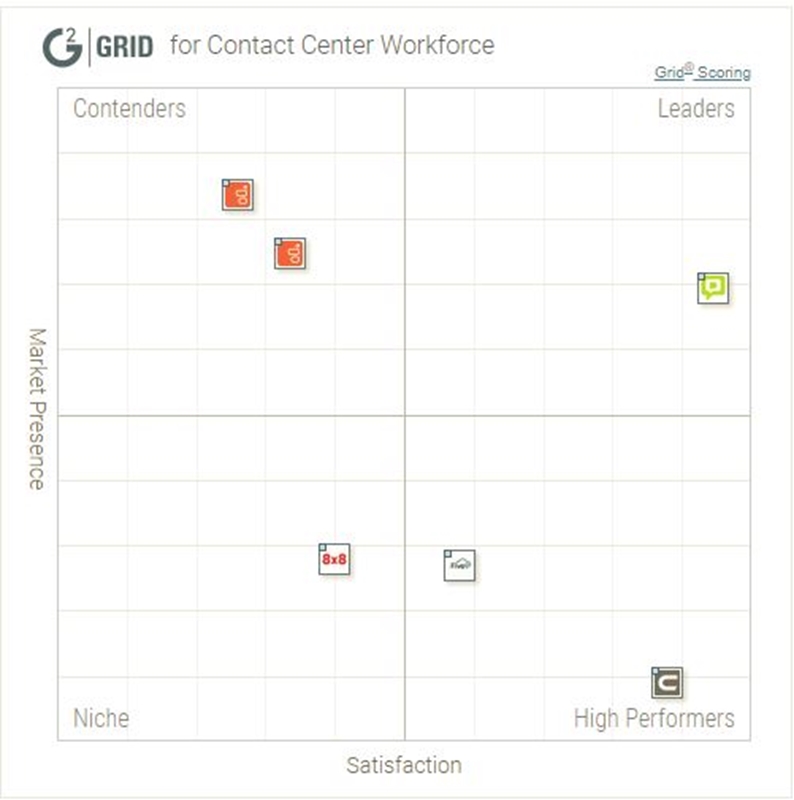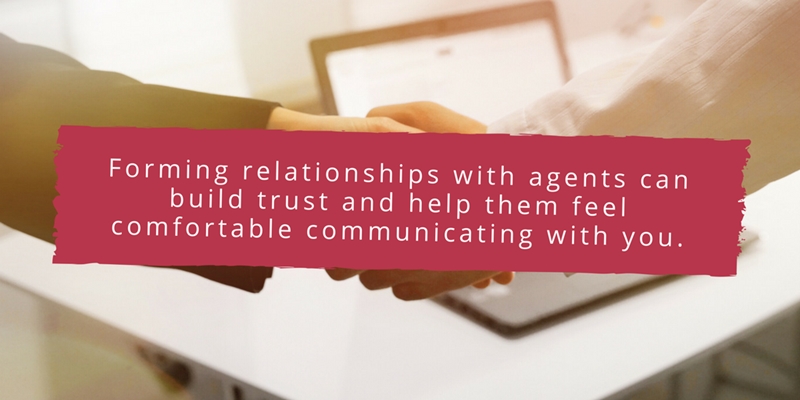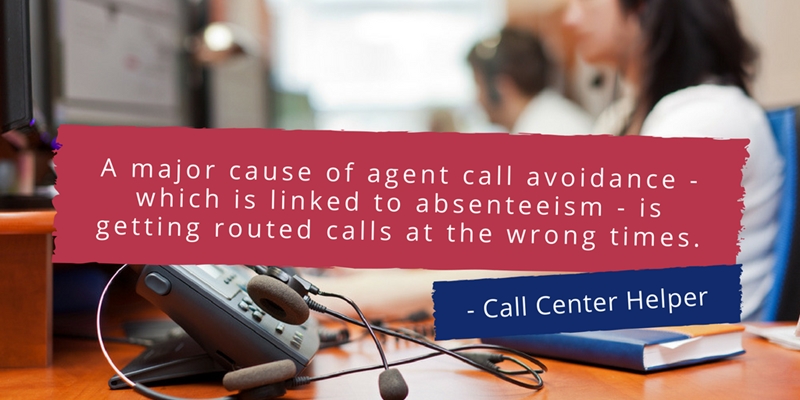Call Design Obligations to the European GDPR
The world has embraced this regulation as being necessary in order to do business directly or indirectly with Europe or European companies. Call Design is increasingly requested to confirm compliance with this regulation by Australian and overseas companies, some are our customers, others are suppliers that need to ensure that we are an integral part of their supply chain. Call Design’s position in this is very clear, we manage and protect Personally Identifiable Information that we hold and use ensuring that it is being collected and handled in accordance with GDPR standards
- Providing users with appropriate mechanisms to safeguard their personal data
- Ensuring that our partners also ensure GDPR compliance during data exchanges
- Updating our Policies and employee handbooks to ensure that staff are aware of their responsibilities
And
- For our Hosted customer systems, we ensure that customers are in full control of personally identifiable information and we support their systems without processing customer data directly.
- Call Design employs secure system infrastructure and secure management and controls using MS active directory and secure data centre security and network infrastructure management.
Three quarters of the outside world don’t trust businesses to do the right thing with our emails, phone numbers, preferences and other details. Security of information and privacy is integral to the day to day operation of our company and it is in our greatest interest that our customers, suppliers, staff and the community at large to have confidence in how we handle business and personal information. This is only possible when our systems, processes and people work together and this is reflected in our processes and practices based on our Policy’s and beliefs. GDPR is not new, Call Design complies with the Australian Privacy Act and state and federal surveillance legislation and marketing Acts, we operate in Australia and overseas and adopt the principles of Australian Privacy Laws and state and federal surveillance legislation and marketing Acts. Some more obvious examples of us treating this regulation seriously day to day includes
- Sending an email to the correct recipient, untrusting Outlooks predictive address population;
- Treating all customer information as confidential
- Treating Call Design business and technical information as secure
Peter Salmon
Call Design Director
Top tips for running a successful performance management system
Performance management systems are an invaluable tool for contact centers. With customer experience expectations increasing all the time, it's vital that you are keeping track of overall staff performance and monitoring where improvement is needed. But how can you ensure that the performance management system you implement is a success? Here are our top tips:
1. Make positivity your focus
Successful performance management is a positive force for your staff and the office atmosphere as a whole. Faced with so much data about your employees work it can be tempting to jump on the areas that need improvement. But this approach is not only demoralizing for staff, it also misses skill sets and achievements that should be nurtured and celebrated. So how can you found your system on positivity?
- Share positive feedback with the whole office.
- Give praise sincerely and often.
- Develop an incentives/rewards system that celebrates exceptional performance.
 A positive approach is key to implementing a successful performance management system.
A positive approach is key to implementing a successful performance management system.2. Communicate with your team
Rapid changes to working practices and expectations can understandably be unsettling and disengaging for your employees. To tackle this and get your staff on board with performance management, it's important that you keep staff well informed. This helps everyone to feel comfortable with the new processes they will be working with. How can you do this?
- Be open and honest with your team about the new system and what it means for them from the outset.
- Share the exact details of what you will be measuring and how.
- Be open to staff feedback. This is important during initial implementation but also continually as the system gets up and running.
3. See it as an opportunity to upskill staff
Performance management systems are excellent at aggregating employee data and highlighting areas that need to be improved. This is a fantastic opportunity to get to know the individuals in your team, which areas they prefer and which they need more training on.
 Targeted training and upskilling your employees raises overall performance and is engaging for staff.
Targeted training and upskilling your employees raises overall performance and is engaging for staff.So what can you do to help upskill your team?
- Identify areas for employee improvement and provide coaching and personal development.
- Introduce further training and upskilling to staff career paths
- Don't be too hasty in letting poor performing employees go - take time to understand the exact reasons for their results, there may be a simple solution!
4. Train your managers
At the end of the day the better managers understand the system they are working with the more likely it is to succeed. Thorough training from experts on how to run and implement a performance management system and integrate it into existing routines can help pave the way.
If you're looking to implement a performance management system into your contact center and want to make it a success, get in contact with the experts at Call Design today.
How can you better engage your team?
We hear about employee engagement all the time but do you know why it matters? Sometimes it can feel like actively engaging your team is a nice-to-do not a must-have. However, research shows employee engagement is a core driver of key business outcomes. Just take a look at some of the stats:
- Gallup research found that companies with top quartile levels of employee engagement performed 21 percent better in terms of profitability compared to companies in the bottom quartile.
- Organizations with engaged team members also had 17 percent higher productivity levels, 10 percent higher customer ratings and lower employee turnover rates than companies with low levels of employee engagement.
- Another study, conducted by Aon Hewitt, found that only 63 percent of employees consider themselves highly or moderately engaged.
This has massively important implications for contact centers. When your employees aren't engaged in their work, it directly affects your bottom line. So, how can managers ensure their agents are engaged with their work? Here are just a few places to start.
1. Talk to your team about engagement
If you're going to invest in engagement, start by engaging your team in the process. Sit down and chat with them about what would actually engage them. What things are currently working? Which aren't? Your agents are a key source of information here - they know better than anyone else what would engage their peers.
#EmployeeEngagement Fact of the Day: 71% of employees prefer a manager who shows praise for any improvement made
— Employee Engagement (@EmplyEngagement) June 5, 2017
2. Show your team some recognition
The Aon Hewitt study found that rewards and recognition have the most potential to improve engagement. Take a close look at what systems or processes you have in place for recognising your team and think about how you could improve them.
When your employees aren't engaged in their work, it directly affects your bottom line.
3. Develop them professionally
One study by PwC found that modern workers are more motivated by learning and development opportunities than financial rewards. Create pathways for your agents, as doing this will help them understand that you value you them as a team member and see a future for them in your organisation.
Interested in learning more?
Employee engagement is just one piece of the management puzzle. To effectively lead a contact center you need to ensure you're aligning staff to core KPIs, providing actionable feedback, implementing effective recognition structures - the list goes on.
That's why Call Design has created a one-day Manager Essentials course as a part of our Workforce Optimization Program. In this session, you'll learn a variety of better leadership techniques, through a series of actionable training modules.
To learn more about the course and what you can learn, head over to our training courses page!
G2 Crowd rates Alvaria WFM as Contact Center Workforce Leader
What do you trust more: A recommendation from a friend or an online review from a stranger? Turns out, according to a BrightLocal Consumer Review Survey, 85 per cent of customers today trust the two mediums equally.
Now more than ever, online reviews are a deciding factor in whether or not consumers give your business a try. The trouble with the digital medium is that there are a lot of fake reviews floating around. In fact, nearly 80 per cent of survey respondents have read a fake product review in the past year alone.
An @AlvariaSoftware customer recently said of Alvaria WFM: "We have over 16,000 employees and Alvaria is the only product we have found that can handle this scale." Check out this @g2crowd review and others here: https://t.co/AyJOIFGK3C
— Jorge Gonzalez (@jorgegoaj) February 26, 2018
Enter: G2 Crowd
Consumers want peer reviews but they need them to be authentic. This dilemma prompted the creation of G2 Crowd - a peer-to-peer business software review platform dedicated to real-time and unbiased user reviews that help you objectively assess what purchases are best for your organization.
G2 Crowd gives users the freedom to research and compare business software, while providing peace of mind that the review is authenticated and coming from someone who has used the software. Through the use of a special algorithm, the platform can calculate:
- Market Presence: Defined as a measure of market share, vendor size and social impact.
- Customer Satisfaction: Calculated via scores from real user reviews.
These calculations inform the creation of unique grids, periodically distributed by G2 Crowd, showcasing products and vendors based on reviews gathered from their community as well as aggregated data.
It's the objective platform, businesses have been looking for.
What does this have to do with Call Design?
The G2 Crowd grid for Contact Center Workforce shows Alvaria Workforce Management (WFM) software scoring in the leadership quadrant (pictured below) - the only WFM software to achieve this rating.
 G2 Crowd Grid® for Contact Center Workforce Software
G2 Crowd Grid® for Contact Center Workforce SoftwareThe distinction is a testament to the functionality and versatility of Alvaria WFM.
The Alvaria Workforce Management listing on G2 Crowd includes feedback from verified customers. Here's what some of our customers are saying about Alvaria WFM:
- "Sometimes we have tools at our disposal, but we might not know the best ways to use it. Alvaria gives the support for users to solve doubts and courses to learn how to make the best out of each tool."
- "My favourite component of the Alvaria suite is the workforce planning. I consider it the benchmark for all other workforce planning. The forecasting tools, scheduling tools, and intraday management are far superior to any other company."
You can read more Alvaria reviews on the G2 Crowd site. Reach out to Call Design today to learn more about what Alvaria WFM can offer you.
How can you better promote accountability in your contact center?
When you take ownership and accountability for your actions, you're much more likely to produce higher quality service.
For managers, inspiring this level of accountability within your contact center is a key step on the path to success. Employees that feel a level of ownership over meeting company goals or achieving critical objectives are more invested and engaged in their work.
It's no surprise, then, that over 90 percent of leaders rank improving the ability to hold others accountable in an effective way as one of the top development needs of their organization, according to a report by Partners in Leadership. Despite this desire, 82 percent of respondents readily admit that they have limited to no ability to actually hold their reports accountable.
So how can you better promote accountability in your contact center?
You can't expect your agents to be accountable if they don't know what you need them to be accountable for.
1. Set clear expectations
You can't expect your agents to be accountable if they don't know what you need them to be accountable for. Taking ownership of tasks starts with setting clear expectations. Let each of your employees know what your desired outcomes are, what metrics they need to work within to reach these goals, as well as the consequences of not achieving them. Setting these expectations ensures you and your team are on the same page about what is required.
2. Give clear feedback
Honest and ongoing feedback is critical to accountability. Your agents need to know if they are meeting expectations and if they're not, feedback sessions are the perfect opportunity to realign their paths. With clear measurements and pre-determined goals, these conversations can be fact-based and simple. These meetings are also a great opportunity for your employees to give you feedback on processes to help keep you accountable as well.
3. Build clear consequences
If you have made an effort at all of the above steps, there is no reason your agents shouldn't be holding themselves accountable. At this point, you have three options: repeat, release or reward. If they are meeting outcomes and hitting metrics, reward them for their successes. If you think you haven't explained yourself well, repeat the above process. If they're continuously missing goals, it is most likely time to release them from the role. Make it clear that these are the consequences of a lack of ownership for their roles - as this failure ultimately affects the quality of your organization's services.
Interested in learning more?
Accountability is just one aspect of a larger theme: Quality Management. When you control the quality of the service you're delivering to your customers, you can optimize the productivity of your agents, increase customer satisfaction rates, and maximize your bottom line.
Call Design offers a two-day course that covers the essentials of quality management, including taking ownership for goals and tasks. To learn more about how you can get started, download our Quality Management Essentials brochure or reach out to the Call Design team today!
What are the 2 golden rules of customer experience?
Did you know that customers are willing to pay more for a good customer experience? And that exceptional service is a better indicator of customer retention than product pricing? Just take a look at a few of the numbers from the Alvaria Customer Experience Index:
- 54 percent of consumers stopped doing business with companies because of poor customer service.
- 68 percent of consumers and 78 percent of millennials did more business in 2017 with companies because of good customer experiences.
- 52 percent of those consumers said they'd pay more for good customer service.
Organizations need to have a strong grasp on the fundamentals of a positive customer experience. It is critical to incorporate this understanding into contact center agent training so that you can ensure high quality customer service every time.
So what are the two most fundamental things customers want from their experiences with your contact center?
Did you know that customers are willing to pay more for a good customer experience?
1. Consistent, seamless experiences
Contact centers need to provide customers with omnichannel options that offer the same quality of service across the board. According to Salesforce's State of the Connected Customer report, three-quarters of consumers demand consistent experiences across platforms.
What's more? Over 70 per cent of respondents said they would switch brands if a business doesn't offer multichannel, seamless experiences. And more than 60 per cent of Australian consumers say they won't go back to a company once they've left, according to research from Accenture.
You need to provide your customer base with options for contacting your team and ensure they are receiving consistent care across the board. If you don't, you risk losing their business permanently.
2. Authentic interactions
Sure, digital mediums have taken the world by storm, but that doesn't mean they've replaced the value of a human touch. Customers expect to be treated like a person, not a number.
Salesforce found that 70 percent of customers claim a business' understanding of their personal needs directly influences their brand loyalty. In fact, over 65 percent of consumers stated they were very likely to switch over to a competitor if they felt a business wasn't treating them like an individual.
It's important for your agents to remember this. Every person in the queue deserves an equal level of personalized attention and care. These authentic interactions are the difference between a loyal customer and lost business.
Keen to learn more? Reach out to us today!
Monitoring your team's approach to customer experience is a critical aspect of quality management. When you can accomplish a consistently high quality experience for consumers, success is inevitable.
If you're interested in more information on how to manage quality across your department, Call Design has the course for you. Our Quality Management Essentials training course gives you the tools you need to set goals for your agents, align your service approaches and assess core metrics.
Contact the Call Design team for more information.
3 important goals for a new contact centre supervisor
Congratulations on becoming a new supervisor! This is a great leadership position to be in, but it comes with its own set of challenges.
If this is your first time leading a contact center team, you're going to need to set some goals in order to begin. The following should be three of your priorities, which will establish your relationships with staff, implement an effective coaching program and confront the issues agents face.
Goal 1: Establish a relationship with your agents
 Friendly relationships can close some of the gaps between manager and agent.
Friendly relationships can close some of the gaps between manager and agent.Forming relationships with your agents can build trust and help them feel comfortable communicating with you. Additionally, Deloitte's senior call center manager Sarah Stealey Reed recommends introducing yourself when you first start so agents know who you are and what you stand for. You should also listen to co-workers in order to find out more about the issues they face.
- Key takeaway: Introduce yourself to everyone when you start, sit down for one-on-one chats to learn more about them, and shadow their customer interactions every now and then to better understand their abilities.
Goal 2: Establish a culture of coaching
Another good tip for new call center supervisors is to implement a performance management initiative with a focus on coaching. A panel organized by Call Center Helper said that coaching sessions can help staff achieve their full potential. You won't be alone: major companies across the world are turning to coaching as a means to improve staff performance - including Adobe Systems, Microsoft and GE, according to McKinsey research.
- Key takeaway: Take time to think about your agents' development and how you can coach them into improving their skills. If you aren't sure about performance management, talk to a company that offers performance management training, like Call Design.
Goal 3: Challenge existing business practices
It's important to challenge the norm in your company and use your new influence to help make agents' lives easier - especially now that you know more about them. However, the Call Center Helper panel advises supervisors remind themselves that they don't know all the answers. Reed also agrees with this: Talk to agents, learn why things work and don't work, and use their detailed knowledge of processes along with your own expertise to find a fix that works for everyone.
- Key takeaway: Don't try to make a system work that you already know doesn't. Use your newfound relationships with staff to find out the root cause of their issues and combine it with your own experience to implement a logical, effective solution.
If your discussions with staff lead you to believe you need a better workforce optimisation platform, or a training course to upskill before you tackle performance management on your own, talk to the experts at Call Design today.
Australia's Mandatory Data Breach Notification Scheme – Call Design’s Position
Whilst strictly the NDB scheme applies to data breaches involving personal information that is likely to result in serious harm, we take the position that we are not always in a position to assess the harm that disclosure of our customer’s or staff information could cause. Our customers store agent information that could be considered under an NDB classification on their own or our Hosted platforms, so rather than limiting our thinking, we classify all Customer information as confidential in our Board Policies and our employment agreements and protect and manage this equally.
Call Design and our customers system data is accessible from more locations, on more devices and through more platforms than ever before. The protection of information in our care requires all employees to take their responsibility very seriously to ensure that business, commercial and individuals personal information is secure through our use of Call Design systems and practices. Prevention, of course, is better than cure. good security hygiene is unescapably important to each of us personally and professionally.
The following link provides more government background information. https://www.oaic.gov.au/privacy-law/privacy-act/notifiable-data-breaches-scheme/
Peter Salmon
Call Design Director
How to manage millennial contact centre agents' performance
By 2020, millennials will make up 50 percent of the workforce, according to the Bureau of Labor Statistics. But do you have a strategy in place for their unique performance needs?
You can't ignore millennial contact center agents, nor can you treat them differently based on whatever stereotypes you may have heard. In this article, we offer three techniques on how to properly motivate and manage millennials in the contact center environment.
Technique 1: Use the best technology you can
Millennials consider "technology use" the defining characteristic of their generation, according to a Nielsen study. Having grown up in the years of major technological advancement, your younger staff members will have not only an affinity for better systems, but a preference for them.
- Key takeaway: If you're managing a large number of millennial staff, consider updating your systems to better optimize their contact center lives. Try linking their daily workforce management platform with a mobile app like Call Design's ME Mobile so they can check in on the go, on whatever device suits them.
Technique 2: Invest time in personalized coaching and development
Millennials want to be upskilled - to develop their careers, advance in the ranks and earn a better wage. A report on millennials by PwC found that "opportunities for career progression" was the top-most attractive trait of a potential employer, followed by competitive pay and training/development programs.
- Key takeaway: Performance management can be a highly effective tool for motivating and managing millennial employees. Set your Gen Y agents clear goals and offer them coaching to help reach these, then evaluate their performance so they can upskill, achieve promotions and earn more money.
Technique 3: Offer two-way, clear communication
Numerous call center leaders agree that millennials prefer it when communication channels are open, encouraged, and work both ways. Backing this up, Deloitte's 2017 millennial survey also found that senior millennials rank "communication" as a more important skill than analytics, sales, business knowledge and even academic skills.
- Key takeaway: You need to talk to your Gen Y agents. If you think other managers aren't effective at this, run communications training programs, and release communication policies that help staff young and old understand when and how they can talk to each other. Note, though, that PwC also found millennials prefer electronic comms over face-to-face, so ensure your new policy allows for a variety of mediums.
With these three techniques, you'll make great strides to better engaging your millennial staff. If you'd like assistance with improving your contact center's technology or implementing performance management plans, Call Design can help. Get in touch with us today to talk to one of our expert consultants.
How to manage sudden absence in an Australian contact centre
Absenteeism costs Australian businesses approximately $578 per employee, per day of absence. This statistic comes from the Australian Industry Group's Absenteeism & Presenteeism Survey Report 2015, which highlights the fact that you absolutely cannot ignore absenteeism within your contact centre business.
However, Australian office leaders aren't stuck dealing with the costs if they know how to prevent absenteeism, and have an action plan to minimise it. So how is a contact centre manager supposed to prevent and manage sudden staff absences?
Make sure staff schedules are updated with sick or annual leave as soon as you become aware of it.
1. Update schedules immediately
Make sure staff schedules are updated with sick or annual leave as soon as you become aware of it. This will help provide everyone with a better insight into the impact that the absence is likely to have, enabling you to optimise breaks, meetings or other activities during the day so that your customers' experience is impacted as little as possible.
If the absence isn't entered until later, other activities might be approved that shouldn't be.
2. Try to understand and empathise
If sudden absence is due to a negative event like illness or bereavement, HR firm KGA recommends that office managers begin all conversations about the required time off with "I'm sorry you're going through this." Managers should then offer their assistance or, at the very least, their ear.
While this won't necessarily help on the day of a sudden absence, it could prevent absenteeism in the future. Forbes explains that a lack of staff motivation can cause absenteeism. And motivation is linked to job satisfaction, which in turn is linked to empathy. The Center for Creative Leadership found in a study that there's a positive relationship between manager empathy and staff job satisfaction levels.
3. Deploy smarter, faster tools
Intelligent workforce management solutions can make a huge difference when office managers are trying to cope with sudden staff losses. Call Center Helper - the worlds's leading contact centre magazine - says that a major cause of agent call avoidance, which often leads to staff absence and attrition, is getting routed calls at the wrong times. For example, a 30-minute troubleshooting call five minutes before the end of a shift.
However, integrating an effective scheduling system like Alvaria WFM into your centre will give you greater oversight on staff workloads so you can better manage long-duration call types in the future. Additionally, schedules that can be viewed and modified in real time can help you balance the workload between agents should someone suddenly become absent.

4. Offer easier shift-swapping
Call Center Helper also recommends allowing shift swapping between agents to reduce absenteeism. Managers might feel like they need to intricately control shifts and schedules, but in actual fact, most agents will be more than willing - and capable - of swapping between themselves in order to meet the needs of both their personal and work lives.
This is another area where contact centre management software is important. A tool like Alvaria WFM or the Call Design ME app allows agents to quickly and easily request leave or swap shifts, without the need for the often slow process of manager intervention
5. Education
Ensure you educate staff on the "The Power of One". The purpose of these sessions is to help staff understand why their attendance and adherence is important.
If you're interested in optimising your workforce with better software or training, contact Call Design today to see what our consultants can do for you.
